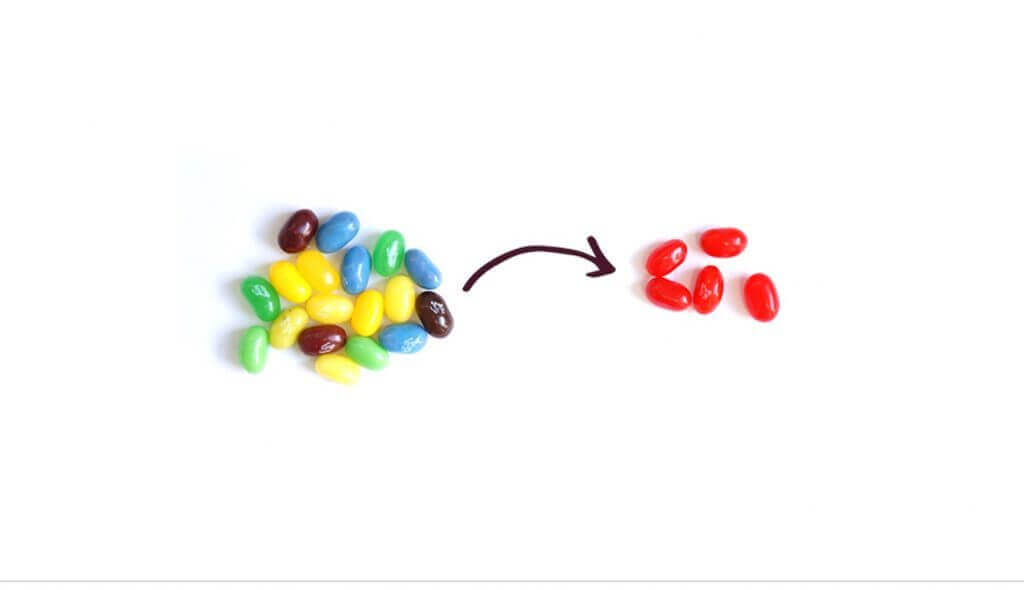
The better you know your customers, the better off your business will be. It’s business 101.
NB: This is an article from Alexa
To address the hypercompetitive nature of today’s marketplace, businesses need to think smaller instead of bigger. This is where micromarketing comes into play. This type of marketing strategy is specifically designed to address a very niche market within your wider target audience.
A strong micromarketing strategy can help your business nail down very specific pockets of people to market a product or service to. Here’s what you need to know about building a scalable micromarketing strategy.
What is Micromarketing?
Micromarketing is a type of marketing that targets a small group of your customer base. These are highly targeted customers who share very specific traits, such as their location, age, interests, household income, shopping behaviors, or occupation. In essence, micromarketing targets specific individuals as opposed to general groups.
For example, a marketing agency may generally market their product or service towards small to mid-sized businesses. They may find, however, that the digital advertising services they offer appeal to small retail stores as well. They may decide to create a micromarketing strategy that targets owners of retail stores with less than a specified number of employees.

Why Businesses use Micromarketing
Micromarketing is used by businesses, both large and small. For example, it can be a great way for a large business to introduce new products or services or help small businesses gain a footing through local advertising efforts.
The primary reasons businesses use micromarketing are to find a very specific market segment of the population that they can sell their product or service to. It’s even more specific than niche marketing in that sense. If a company can match that specific audience with the right product or service, it can generate a higher ROI than if they were to cast a wide net. Many businesses do this to test new offerings as well as advertising ideas.
If you look at a large corporation like Coca-Cola, for example, there’s only a small and specific group of people within their target audience who will drink a product like Diet Coke with extra caffeine and a toasted vanilla flavor. Coca-Cola has likely implemented a micromarketing strategy to determine that there is indeed an appetite for that particular soft drink.
The Pros and Cons of Micromarketing
There are a few micromarketing advantages and disadvantages to consider before carrying out this type of marketing plan.
The primary disadvantage that comes to mind when thinking about micromarketing is how much of a time commitment it can be. Since you’re targeting a very specific group of customers, you need to know them on an intimate level. You also need to create detailed buyer personas and really dig into your market research.
With that in mind, there are some distinct advantages that come with running micromarketing campaigns as well. Chief among those benefits is how highly targeted these efforts can be. You’re really getting to know an individual customer based on things like their age or job title. Equipped with this information, you can better understand their overall needs.
Another benefit is that micromarketing is generally more cost-effective in increasing ROI than a sprawling countrywide mass marketing campaign. Since you’re targeting fewer people, you spend less money targeting them.
Brands With Successful Micromarketing Strategies
There are many great examples of companies that have built successful micromarketing strategies, and each has done so in different ways. We’re going to highlight a few big winners:
Coca-Cola
One example of a successful micromarketing strategy implemented by the Coca-Cola camp is their 2014 “Share a Coke” campaign, where they replaced the Coca-Cola label on their 20-ounce bottles with first names. They developed a micromarketing strategy to analyze what names would sell the most according to their customer base.
The personalized touch became a huge success for the company, and Coca-Cola saw their largest-ever year-over-year growth for the 20-ounce bottle at 19%.

Source: The Independent
HubSpot
HubSpot co-founder and CEO Brian Halligan is often credited with creating the term “inbound marketing” back in 2008. Since then, inbound marketing has become a marketing staple that is used by thousands of companies around the world. HubSpot has owned the inbound marketing niche and created books, a conference, and an academy built around the concept.
The micromarketing strategy HubSpot implemented to create the inbound marketing concept was born out of targeting small to mid-sized businesses that specifically couldn’t afford to build expensive advertising and marketing campaigns. Inbound marketing served as a low-cost solution to this issue.
Uber
One of the best examples of a company that developed highly targeted micromarketing campaigns to target specific customer needs is none other than Uber. In fact, they didn’t actually start out as the ride-hailing service we all know and love today. Uber used to be an app-based black car limo service that only served San Francisco because of the city’s taxi problems.
Word about this new service spread through San Francisco quickly, and soon other states were clamoring for it as well. As they moved from state to state, Uber created localized micromarketing campaigns that catered to those markets. This was centered on using social media data to identify specific transportation issues in different cities and states. Uber then created localized online ads with different promotions and referral benefits to entice people in these markets to use the app.
How to Build a Scalable Micromarketing Strategy
There are different types of micromarketing strategies you can implement for your business, but each strategy is predicated on these important steps:
1. Establish Buyer Personas
Buyer personas are the most important piece of any successful micromarketing strategy. Without them, you’ll lack an intimate understanding of your customer base.
To create a well-rounded buyer persona, you need to consider both quantitative and qualitative components.
For the quantitative components, you should pull metrics from as many data repositories as possible. Some places to pull data from include Google Analytics, Instagram Insights, Facebook Insights, and YouTube Analytics. These analytics platforms can provide insight into demographics, age, gender, location, and interests. The reason you want to pull this quantitative data is to understand, from a high level, how your current customers are engaging with your website and content.
Quantitative data tells you the general characteristics of your buyer personas, while qualitative data is designed to understand what fuels those customers on an emotional level.
The best way to find this information is to conduct a survey or interview a set number of customers. If you’re interviewing customers, you’ll want to talk to a minimum of 10 to get a fair scope. Since you’ve already pulled the quantitative data points, it can help guide more in-depth questions such as where do they shop, what makes them trust a brand, and what made them feel confident trusting your brand.
2. Determine the Best Way to Reach Them
Now that you know who you’re marketing to, it’s time to figure out how you’re going to do it. Each buyer persona you create may have different preferences when it comes to the platforms they use most. A 19-year-old college student may spend a lot of their time on Instagram, while a 58-year-old parent may be on Facebook most of the time. Factors such as demographic data can help you determine what platforms may work best for certain people.
It’s ultimately up to you to determine the best way to reach your buyer personas. With that in mind, here are some common ways you can connect with them online:
- Online ads (Google, Facebook, etc.)
- Social media (Facebook, Twitter, Instagram, etc.)
- Podcasts (iTunes, Spotify, etc.)
- Video-streaming services (YouTube)
3. Come up With Your Messaging
Finding the right platforms to reach your target customers is one thing, but it won’t do much without the right messaging to convert them.
This is why the qualitative component of building buyer personas is so important — you need to understand how your personas think on an emotional level. It’s best practice to conduct interviews and write down key phrases they mention about why they felt confident trusting your company. These phrases are strong emotional drivers to purchase, so using them in your advertising or organic messaging will resonate with your buyer personas.
4. Implement and Test
Since you’re using micromarketing to test what resonates with a niche audience, messaging will give you insight on how to best convert them. For example, when creating a Facebook ad campaign, you’ll want to always create two ad variants to A/B test two different messages to see which one has a higher conversion rate. Once you find your winning formula, you can leverage this in subsequent ad campaigns to scale your micromarketing strategy.
Once you have these building blocks in place, it’s time to implement your micromarketing campaign. Make sure you’re constantly testing different messaging to see how the audience responds. From there, you can optimize the campaign to make sure you’re getting the best ROI.




